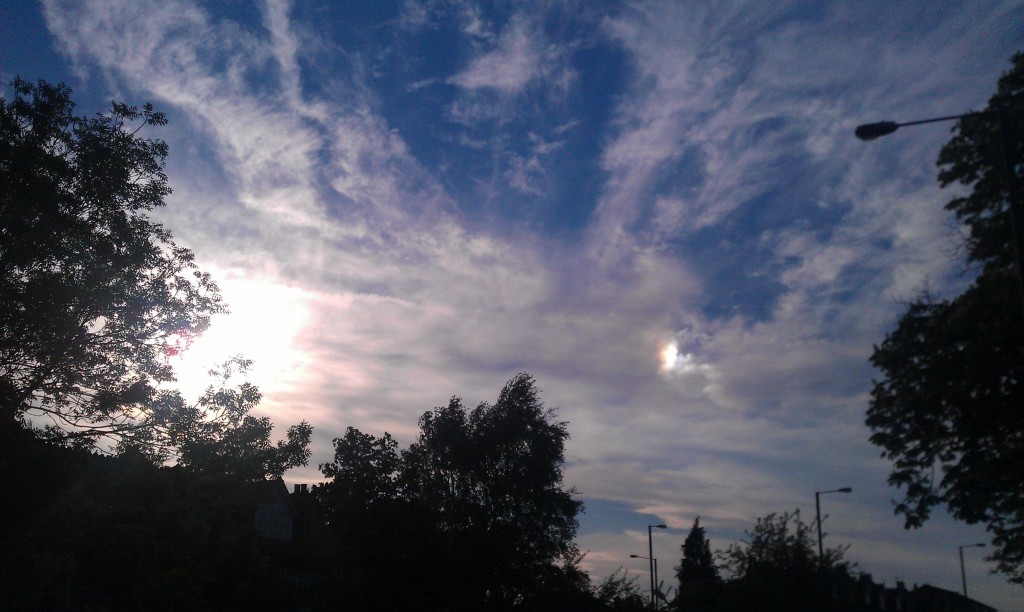
Despite keeping an eye out for strange atmospheric phenomena, my track record is not good, and I count myself lucky to catch the occasional rainbow. Lots of sailing, flying, and mountain walking over the years, with nice low, clear, horizons, and I’ve yet to see the almost mythical ‘Green Flash’.
But yesterday I saw a special type of mini-rainbow: a Sun Dog.
The concentrated patches or spots of light can be very bright, always at the same level of the sun, and always at a 22 degree angle from the sun.
They’re caused by light passing through clouds of ice crystals in the upper atmosphere, typically above 10 km. Ice crystals are all hexagonal in cross-section, and vary in size and length; but under the conditions that generate a sun dog, the crystals have become aligned in the air flow (because they’ll have a minimum air resistance in a shared direction) so that light passing through them leaves in the same direction: hence the 22 degrees.
I’ve seen photos of sun dogs, and may have seen fainter patches of rainbow that were actually unconvincing sun dogs. But this one was really bright, like a little sun hanging where it shouldn’t be. You’ll know it if you see one.
And if that’s piqued your interest for atmospheric phenomena, here’s an excellent lecture from Professor of Astronomy at Gresham College, Carolin Crawford, who explains better than I can Sun Dogs (from around 44 mins) and a whole bunch of other effects that I never knew existed.
After watching this lecture again, I think there’s also a bit of Coronae interference scattering visible in my photo: that pink/purple glow near the sun.